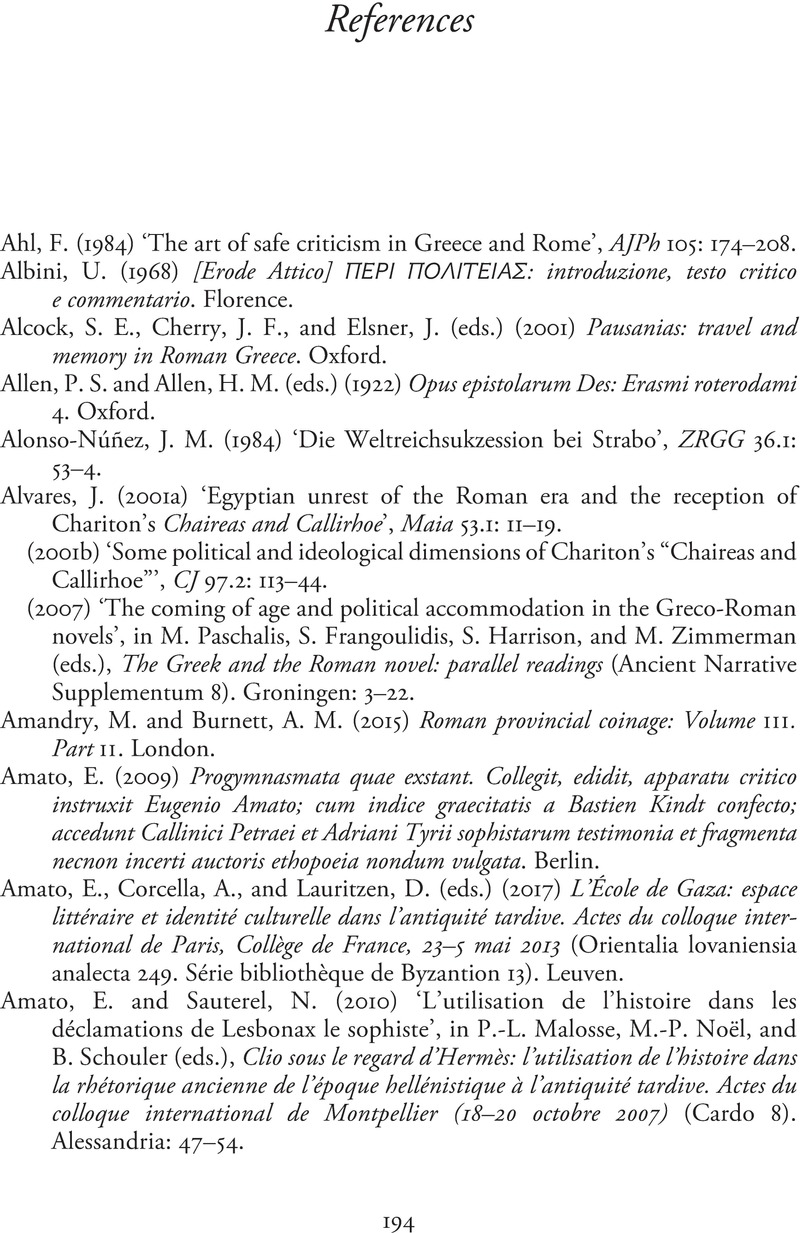Book contents
- Greek Declamation and the Roman Empire
- Greek Culture in the Roman World
- Greek Declamation and the Roman Empire
- Copyright page
- Dedication
- Contents
- Preface
- Abbreviations
- Introduction
- Chapter 1 Exempla and Exemplarity
- Chapter 2 Declamation, Life, and the Imagination
- Chapter 3 Text and Performance Context
- Chapter 4 Identity Parade
- Chapter 5 Macedon
- Chapter 6 Strife and Concord
- Conclusion
- Book part
- References
- Index
- References
References
Published online by Cambridge University Press: 22 June 2023
- Greek Declamation and the Roman Empire
- Greek Culture in the Roman World
- Greek Declamation and the Roman Empire
- Copyright page
- Dedication
- Contents
- Preface
- Abbreviations
- Introduction
- Chapter 1 Exempla and Exemplarity
- Chapter 2 Declamation, Life, and the Imagination
- Chapter 3 Text and Performance Context
- Chapter 4 Identity Parade
- Chapter 5 Macedon
- Chapter 6 Strife and Concord
- Conclusion
- Book part
- References
- Index
- References
Summary

- Type
- Chapter
- Information
- Greek Declamation and the Roman Empire , pp. 194 - 212Publisher: Cambridge University PressPrint publication year: 2023



